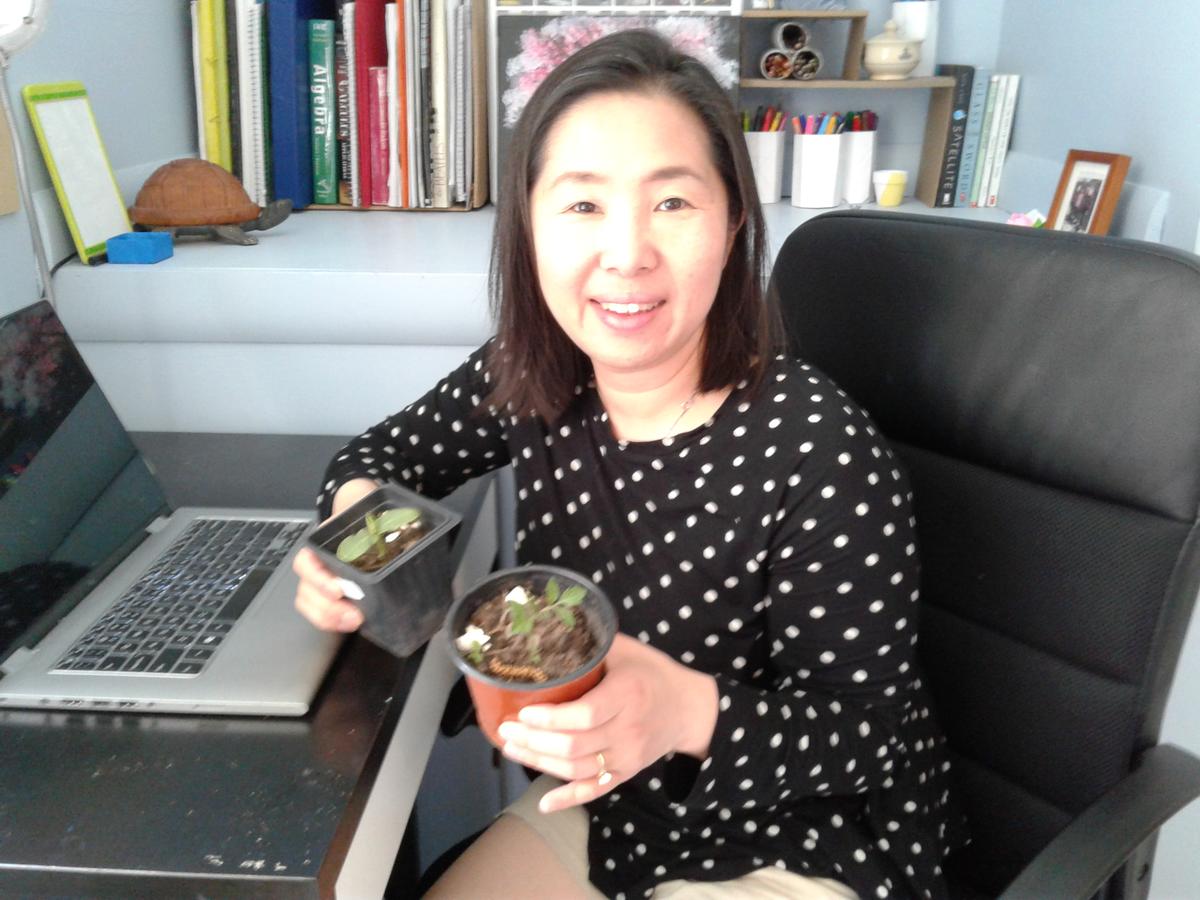Minnesota’s wild rice resources are highly valued and protected. One way we do that is by striving to maintain low sulfate levels in our freshwater resources. It’s a challenge that NRRI Environmental Engineer Chan Lan Chun is tackling with a complicated, collaborative and multi-pronged project
And she loves it.
As an Environmental Engineer with expertise in microbiology and biotechnology, Chan Lan Chun is developing low-cost sulfate reduction systems for Minnesota. She is leading a team that is pulling together a strange trifecta -- natural sulfate-reducing bacteria with chemical reactions and using abundant iron-bearing minerals.
The sulfate ion in Minnesota’s freshwater systems is the result of both natural geological sources as well as human impacts. When levels become elevated, drinking water quality is impacted and other issues arise. There’s concern that sulfate is corrosive to infrastructure and that it negatively affects the growth of wild rice.
Chun has a dual appointment at NRRI and in the Civil Engineering Department at UMD. Recently tenured, she has the expertise and drive to unravel the complexities of the sulfur cycle in the environment.
Elemental sulfur occurs as a yellow solid. When exposed to oxygen and dissolved in water as a sulfate ion, it’s a natural salt, but in the presence of certain bacteria and in an oxygen deficient environment – conditions typically found in wetlands – it can convert into a toxic and corrosive gas, hydrogen sulfide. Chun’s project works with the reaction of the sulfide ion to iron, turning it back into its solid form as iron sulfide.
“I get excited about studying the biogeochemistry of sulfur,” says Chun. “It’s complicated, but fascinating.”
U Collaborations
Chun’s project uses a multi-prong approach that leans into NRRI’s interdisciplinary expertise, with collaborations across the University of Minnesota system and with industrial partners.
NRRI’s extensive water expertise led by Lucinda Johnson is matched by broad and deep minerals knowledge led by George Hudak. Both are key elements to Chun’s treatment process. The NRRI chemistry team is a mix of many disciplines and includes Mei Cai, Shashi Rao, Jerry Henneck, Beth Bernhardt, Jeff Kinkel and Sara Post. This is a complicated project with many moving parts, so Chun is especially grateful for the project management expertise of Shima Hosseinpour who keeps project objectives on track and on time. And Chemist Igor Kolomitsyn is always willing to chat about sulfur chemistry.
For biological expertise, Chun brings in a team from across the University system and relies heavily on UMD colleagues and her students. They have been active in the field, collecting water samples for later analysis to support the ongoing work, while adhering to stringent NRRI policies for safe working practices.
“NRRI is a great place to conduct fundamental science research for real-world applications,” Chun says. “I am fortunate to be able work on regional environment problems and prevention on a project with global relevance.”
Chan Lan in Lock-Down
While working from home, and with help from her children, ages 7 and 12, Chun is experimenting with paper towel seed germination, spraying them with water and observing daily changes. Her family is hoping for a vibrant garden of marigolds, columbine and echinacea along with a variety of vegetables.
